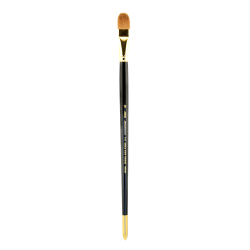Media Gallery
- Cat's Tongue Paint Brush
- Cat Tongue Brush
- Cat's Tongue Acrylic Paint Brush
- Paint Brush Drawing
- Tongue Cleaning Brush
Cat's Tongue Paint Brush



A pure or polymerized tung oil finish is easy to use and will produce beautiful results on any type of wood, inside or out. Tung oil finishes are usually applied to unfinished wood, but they can be used over oil based stains.
- Paint Paint Brushes Acrylic Brush Sets Oil Watercolor Multi-Purpose. Silver brush® the art sherpa™ 4010 cats tongue long handle brush $17.99 - $29.99 Save 20% with code 20MADEBYYOU Get your business supplies in bulk and at a great, low price 365 days a year with MichaelsPro™ Packs.
- It's another free Cheap Joe's 2 Minute Art Tip with 2 Minute Julie. In this episode Julie talks and purrs about the wonders of cat tongue brushes.
Other types of existing finishes, such as varnish, must be removed, as tung oil is a penetrating oil. It needs to penetrate deeply into the wood fibers and pores.
Preparing the Wood
The cat's tongue is a utility brush, performing many techniques well. Its triangle tip is for delicate lines, edge for medium-sized strokes, and flat side for bold lines and confident washes. A growing favorite among watercolorists, though it works well with most media. Try out the Cat’s Tongue 5540 Series for your next watercolor project.
New wood needs to sanded smooth prior to application. This finish does not build a film like varnish, so you need to do most of the sanding before any tung oil finish is applied.
Cat Tongue Brush
If the wood is rough, start with medium grit sand paper and then finish with a fine grit. Remember to always sand in the direction of the grain.
After sanding, do any repairs. Fill any holes or cracks with wood filler. If you plan to use a wood stain beneath the tung oil finish, choose a stainable filler. If you don’t plan to use stain, choose a colored wood filler that approximately matches the wood’s color. Do a final sanding if necessary and remove all dust with tack rags.
Exterior wood surfaces should be cleaned with water and a scrub brush to remove any residual stains or finishes. A pressure washer can be used, if needed, but low pressure should be used. All stains, such as rusty nail heads, also must be removed prior to applying tung oil. Allow all wood surfaces to fully dry before proceeding.
Staining the Wood
Cat's Tongue Acrylic Paint Brush
Any oil base wood stain can be applied. A tung oil finish has an amber color that will change or enhance the stain’s color. Consider this when you choose the color. You may want to test the results before proceeding with the project. Apply the stain and finish to a scrap piece of similar wood.
Choose traditional colors that will be subtle and still enhance the wood grain.
Applying Tung Oil
Chic mice & touchpads driver download for windows 10.
A can be applied pure or thinned up to 50% with mineral spirits or turpentine. Thinning the first coat increases penetration, decreases the drying time and produces better results.
The typical application method for smooth interior wood is hand rubbing. Dip a soft cloth or rag into the finish and rub onto the wood. Keep applying until the wood is saturated. Use a natural bristle brush for hard to reach areas. Allow each coat to remain on the surface for 20-30 minutes. Then wipe all areas to remove any excess that remains. Check for drips or runs after another few minutes.
Applying tung oil to wood countertops, cutting boards or wood bowls is very easy. First only use 100% pure tung oil without thinning. Apply liberally with a brush or rag. Using circular rubbing motions will help the oil penetrate. Finish by using a rag to remove any excess by lightly rubbing in the direction of the wood grain. Repeat when dry.
Drying is a slow process and takes between 24 – 48 hours. The time depends on the porosity of the wood and whether you thinned the finish.
It will take 3 – 4 coats to achieve a waterproof surface. Lightly sand or buff the wood with extra fine steel wool between coats. This achieves better results than using sandpaper.
For exterior use, brushing is the best method for application. Thin the first application to increase penetration. Pick up all drips and runs after 30 minutes. Continue to apply additional coats. It takes 4 – 6 coats on new, very porous woods like cedar.
Paint Brush Drawing
Maintaining Tung Oil Finishes
Maintenance is very easy. Remove light scratches with a light sanding and the addition of another coat of tung oil finish. Interior wood surfaces might need another coat every 2 – 4 years and exterior wood 1 – 2 years depending on exposure to sun light and the wood species.
Tongue Cleaning Brush
